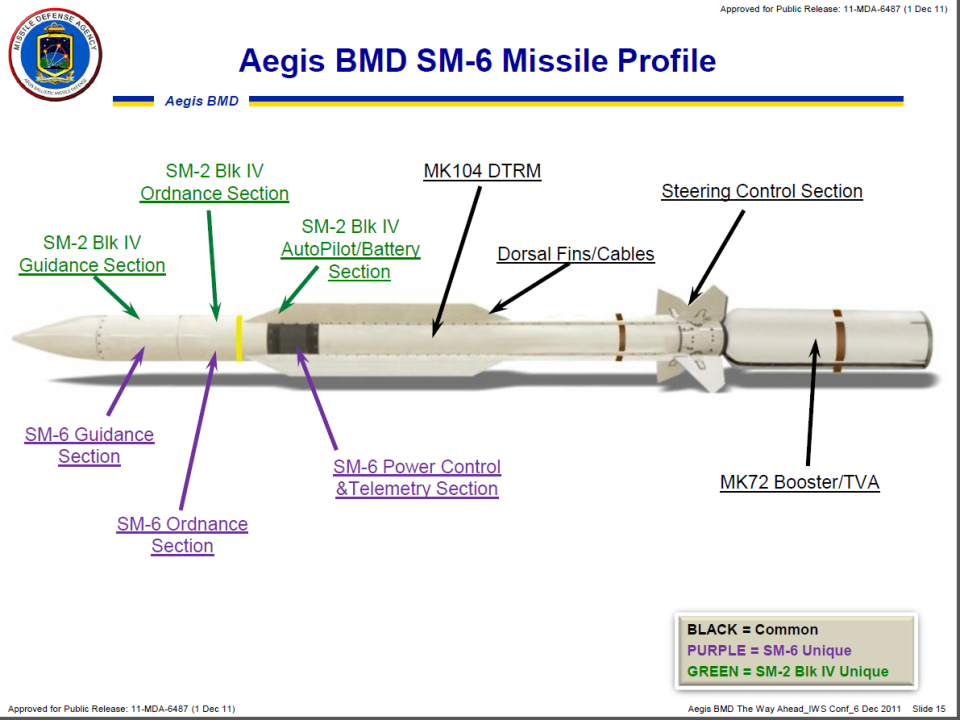A Navy Destroyer Teamed Up With Drones to Hit a Ship 250 Miles Away
A U.S. Navy guided missile destroyer targeted a simulated enemy ship at a range of more than 250 miles.
The destroyer relied on targeting data supplied by uncrewed ships and aircraft.
Using drones to act as scouts for the crewed ship allows the warships to remain hidden, protecting them from enemy attack.
The U.S. Navy guided missile destroyer USS John Finn recently achieved what could be the farthest anti-ship missile shot ever—all with the help of drones.
➡ You love badass military tech. So do we. Let’s nerd out together.
The John Finn, acting on targeting data provided by uncrewed air and sea platforms, struck a simulated target at more than 250 miles. The use of drones for targeting purposes will allow the Navy to detect, track, and destroy enemy targets at long distance without exposing friendly ships to enemy sensors.
The missile shot took place on April 25 during the U.S. Pacific Fleet’s Unmanned Systems Integrated Battle Problem 21 (UxS IBP 21). The battle problem, which is underway off the coast of southern California, is testing new concepts in teaming crewed and uncrewed ships and aircraft, including the MQ-9 SeaGuardian, inflatable balloons, warships like the Sea Hawk and Sea Hunter, and even submarine drones like CARINA.
This exercise paired the uncrewed craft with littoral combat ships, guided missile destroyers, guided missile cruisers, submarines, and Navy helicopter squadrons. The missile shot saw unspecified crewed and uncrewed systems providing a long-range missile track for the John Finn.
The destroyer launched an SM-6 missile at a simulated enemy warship and struck it. Here’s a launch video from the ship:
Guided-missile destroyer USS John Finn (DDG 113) launches a missile as @USPacificFleet's #UxSIBP21 concluded. @SurfaceWarriors pic.twitter.com/WN2hQEc4P0
— UxS IBP (@UXSIBP) April 27, 2021
SM-6 is the latest version of the U.S. Navy’s Standard series of long-range, surface-to-air missiles. SM-6 flies at Mach 3.5 and has a range in excess of 250 miles. The missile can actually engage targets beyond a destroyer’s or cruiser’s radar range, as low-altitude targets use Earth’s curvature to mask their approach. This has resulted in SM-6 gaining the ability to accept targeting data from high-flying aircraft like the E-2D Advanced Hawkeye, which can look down and detect low-flying enemy aircraft and missiles.
Over the decades, Standard missiles have had a secondary anti-ship capability. The U.S. Navy used early Standard missiles against Iranian Navy warships during Operation Praying Mantis, the brief, undeclared naval war between the two countries in the late 1980s. SM-6 is the latest iteration to inherit this capability. Although SM-6’s warhead isn’t as large as a dedicated anti-ship missile, its top speed of Mach 3.5 helps inflict additional kinetic energy damage upon a target.

SM-6 is a missile that most, if not all, Navy destroyers and cruisers will have in their missile silos. Each ship has a limited number of silos capable of carrying a mix of anti-air, anti-ship, land-attack, and anti-submarine missiles. With no ability to refill the silos at sea, it’s critical to load the right mix of missiles in port before a deployment. This makes a dual-use missile like SM-6 capable of striking aircraft, cruise missiles, and ships especially useful.
Imagine a task force of three destroyers, supported by uncrewed surface warships and aircraft, searching for an enemy fleet. Instead of the destroyers banging away with their radars and risking detection by the enemy, the ships would operate with their radars off, using the drones to search for the fleet.
Once the drones locate the enemy, the destroyers could close to SM-6 range and then launch a barrage of missiles. The destroyers could slip away in the chaos, never revealing their exact location.
This record missile shot is likely the future of naval warfare as we know it. Using inexpensive drones to hide (or detect) costly ships is a no-brainer, and anything that stretches the capabilities of existing weapons is a good thing. Expect other navies to follow the U.S. Navy’s lead in the near future.
🎥 Now Watch This:
You Might Also Like

